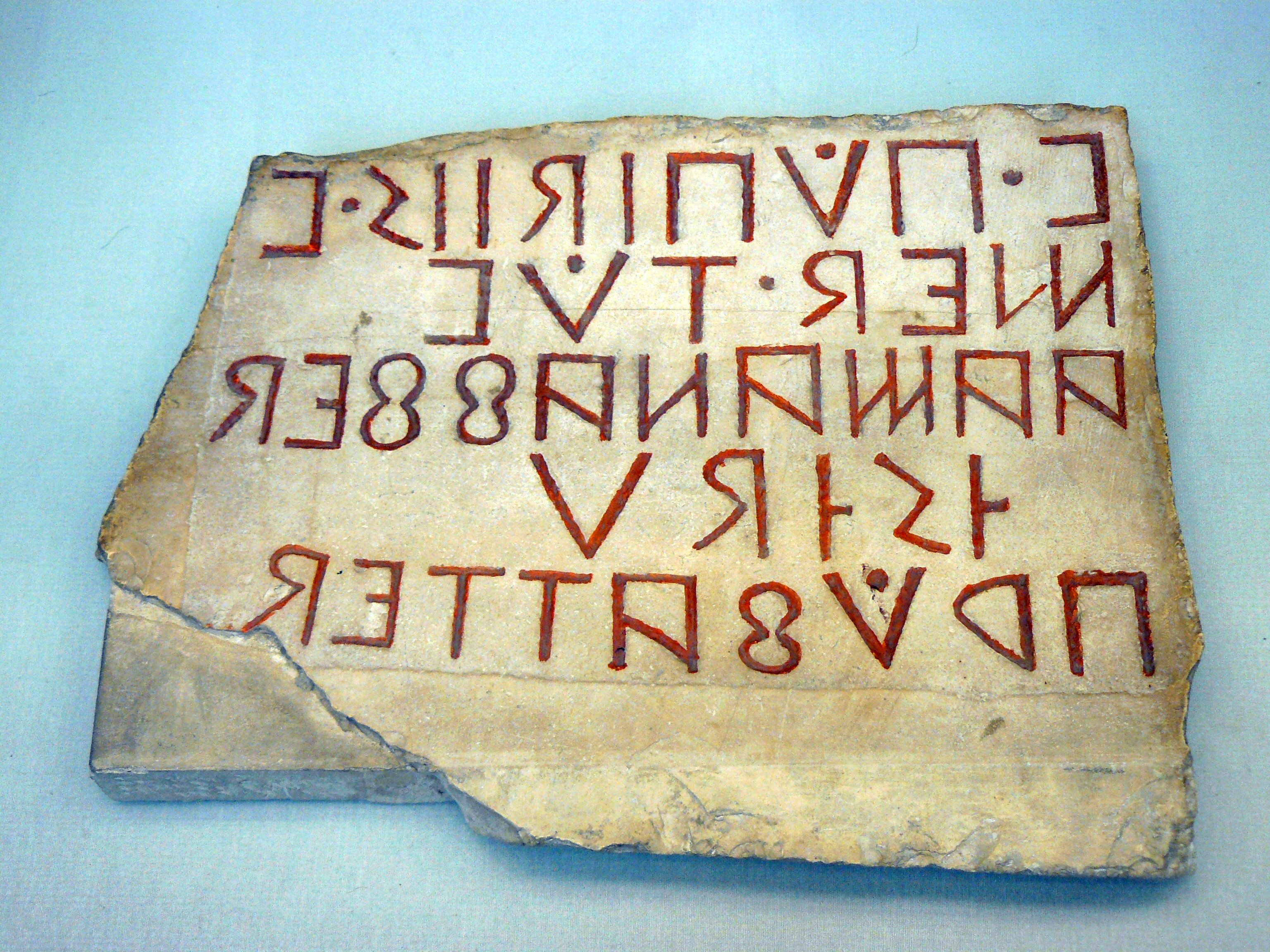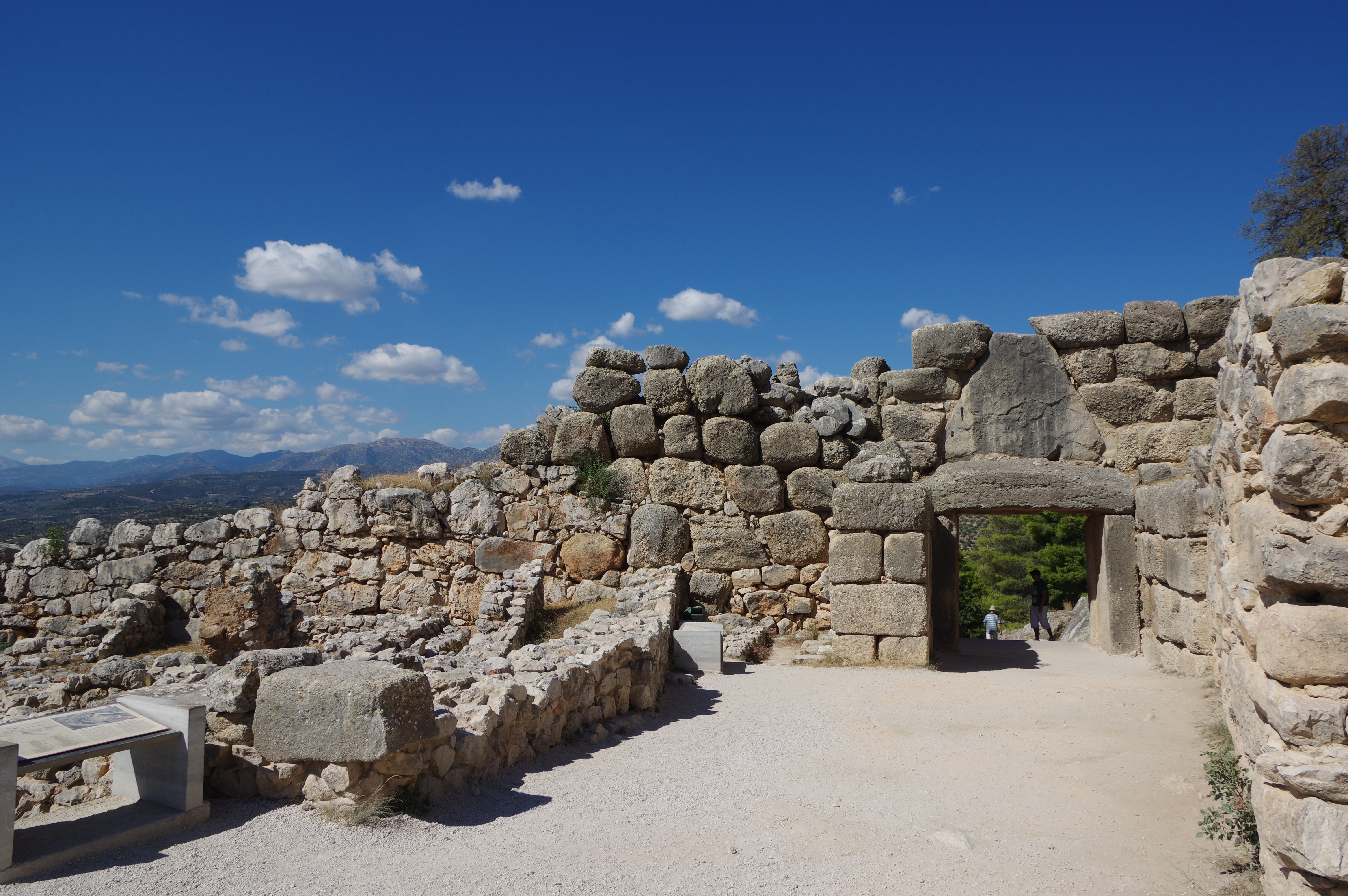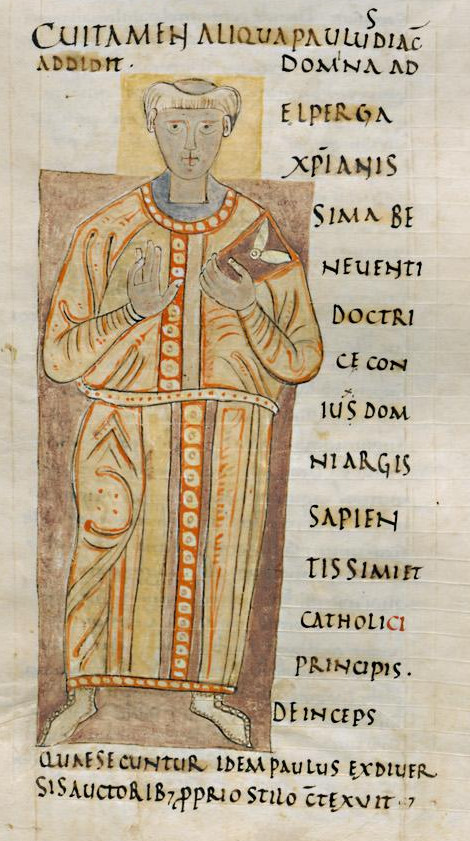|
Boiano
Bojano or Boiano is a town and ''comune'' in the province of Campobasso, Molise, south-central Italy. History Originally named Bovianum, it was settled by the 7th century BC. As the capital of the Pentri, a tribe of the Samnites, it played a major role in the Samnite Wars, as well as in the Social War, when it was a temporary capital (89 BC). It was sacked by Sulla. It was colonized under both the triumvirates, and by Vespasian, who settled veterans of Legio XI ''Claudia'' (whence the name ''Bovianum Undecumanorum'', to distinguish it from Bovianum Vetus), and remained an important centre into late antiquity. After the Lombard conquest, the deserted area was given to a group of Bulgars, who circa 662 fled from the Avars and sought refuge with the Lombards. Bojano became a seat of a gastaldate. The Bulgars also settled in nearby Sepino and Isernia. Paul the Deacon in his ''Historia Langobardorum'' writing after the year 787 says that in his time Bulgars still inhabited the ar ... [...More Info...] [...Related Items...] OR: [Wikipedia] [Google] [Baidu] |
Old Great Bulgaria
Old Great Bulgaria or Great Bulgaria (Medieval Greek: Παλαιά Μεγάλη Βουλγαρία, ''Palaiá Megálē Voulgaría''), also often known by the Latin names ''Magna Bulgaria'' and ''Patria Onoguria'' (" Onogur land"), was a 7th-century nomadic empire formed by the Onogur Bulgars on the western Pontic–Caspian steppe (modern southern Ukraine and southwest Russia). Great Bulgaria was originally centered between the Dniester and lower Volga. The original capital was Phanagoria on the Taman Peninsula between the Black and Azov seas. In the mid-7th century, Great Bulgaria expanded west to include Avar territory and was centered on Poltava. During the late 7th century, however, an Avar-Slavic alliance in the west, and Khazars in the east, defeated the Bulgars, and Great Bulgaria disintegrated. Successor states are the First Bulgarian Empire and Volga Bulgaria. Origins The etymology of the ethnonym ''Bulgar'' is not completely understood; it is difficult to tra ... [...More Info...] [...Related Items...] OR: [Wikipedia] [Google] [Baidu] |
Bojano
Bojano or Boiano is a town and ''comune'' in the province of Campobasso, Molise, south-central Italy. History Originally named Bovianum, it was settled by the 7th century BC. As the capital of the Pentri, a tribe of the Samnites, it played a major role in the Samnite Wars, as well as in the Social War, when it was a temporary capital (89 BC). It was sacked by Sulla. It was colonized under both the triumvirates, and by Vespasian, who settled veterans of Legio XI ''Claudia'' (whence the name ''Bovianum Undecumanorum'', to distinguish it from Bovianum Vetus), and remained an important centre into late antiquity. After the Lombard conquest, the deserted area was given to a group of Bulgars, who circa 662 fled from the Avars and sought refuge with the Lombards. Bojano became a seat of a gastaldate. The Bulgars also settled in nearby Sepino and Isernia. Paul the Deacon in his ''Historia Langobardorum'' writing after the year 787 says that in his time Bulgars still inhabited the ar ... [...More Info...] [...Related Items...] OR: [Wikipedia] [Google] [Baidu] |
Hauteville Family
The Hauteville ( it, Altavilla) was a Norman family originally of seigneurial rank from the Cotentin. The Hautevilles rose to prominence through their part in the Norman conquest of southern Italy. By 1130, one of their members, Roger II, was made the first King of Sicily. His male-line descendants ruled Sicily until 1194. Some Italian Hautevilles took part in the First Crusade and the founding of the Principality of Antioch (1098). Origins The traditional account of the family's origin traces them back to Hiallt, a 10th-century Norseman who settled in the Cotentin Peninsula and founded the estate of ''Hialtus villa'', giving rise in corrupted form to the family toponymic ''Hauteville''. The name represents the Scandinavian ''Hjalti'' or ''Hialti''), but may instead have resulted from confusion with the ''Helt s' found in ''Heltvilla'', modern Héauville.''Les Noms des communes et anciennes paroisses de la Manche'', A. et J. Picard, préface Yves Nédélec, 1986, , oclc=1531442 ... [...More Info...] [...Related Items...] OR: [Wikipedia] [Google] [Baidu] |
Samnites
The Samnites () were an ancient Italic people who lived in Samnium, which is located in modern inland Abruzzo, Molise, and Campania in south-central Italy. An Oscan-speaking people, who may have originated as an offshoot of the Sabines, they formed a confederation consisting of four tribes: the Hirpini, Caudini, Caraceni, and Pentri. Although allied together against the Gauls in 354 BC, they later became enemies of the Romans and fought them in a series of three wars. Despite an overwhelming victory at the Battle of the Caudine Forks (321 BC), the Samnites were subjugated in 290 BC. Although severely weakened, the Samnites would still side against the Romans, first in the Pyrrhic War and then with Hannibal in the Second Punic War. They also fought in the Social War and later in Sulla's civil war as allies of the Roman consuls Papirius Carbo and Gaius Marius against Sulla, who defeated them and their leader Pontius Telesinus at the Battle of the Colline Gate (82 BC). Afterward ... [...More Info...] [...Related Items...] OR: [Wikipedia] [Google] [Baidu] |
Molise
Molise (, , ; nap, label=Neapolitan language, Neapolitan, Mulise) is a Regions of Italy, region of Southern Italy. Until 1963, it formed part of the region of Abruzzi e Molise, alongside the region of Abruzzo. The split, which did not become effective until 1970, makes Molise the newest region in Italy. Covering , it is the second smallest region in the country after the Aosta Valley, and has a population of 313,348 (as of 1 January 2015). The region is split into two provinces, named after their respective capitals Campobasso Province, Campobasso and Isernia Province, Isernia. Campobasso also serves as the regional capital. Geography Molise is bordered by Abruzzo to the north, Apulia to the east, Lazio to the west, and Campania to the south. It has of sandy coastline to the northeast, lying on the Adriatic Sea looking out towards the Isole Tremiti, Tremiti islands. The countryside of Molise is mostly mountainous, with 55% covered by mountains and most of the rest by hills th ... [...More Info...] [...Related Items...] OR: [Wikipedia] [Google] [Baidu] |
Cyclopean Walls
Cyclopean masonry is a type of stonework found in Mycenaean architecture, built with massive limestone boulders, roughly fitted together with minimal clearance between adjacent stones and with clay mortar or no use of mortar. The boulders typically seem unworked, but some may have been worked roughly with a hammer and the gaps between boulders filled in with smaller chunks of limestone. The most famous examples of Cyclopean masonry are found in the walls of Mycenae and Tiryns, and the style is characteristic of Mycenaean fortifications. Similar styles of stonework are found in other cultures and the term has come to be used to describe typical stonework of this sort, such as the old city walls of Rajgir. The term comes from the belief of classical Greeks that only the mythical Cyclopes had the strength to move the enormous boulders that made up the walls of Mycenae and Tiryns. Pliny's ''Natural History'' reported the tradition attributed to Aristotle, that the Cyclopes were t ... [...More Info...] [...Related Items...] OR: [Wikipedia] [Google] [Baidu] |
Robert Guiscard
Robert Guiscard (; Modern ; – 17 July 1085) was a Norman adventurer remembered for the conquest of southern Italy and Sicily. Robert was born into the Hauteville family in Normandy, went on to become count and then duke of Apulia and Calabria (1057–1059), Duke of Sicily (1059–1085), and briefly prince of Benevento (1078–1081) before returning the title to the papacy. His sobriquet, in contemporary Latin and Old French , is often rendered "the Resourceful", "the Cunning", "the Wily", "the Fox", or "the Weasel". In Italian sources he is often Roberto II Guiscardo or Roberto d'Altavilla (from Robert de Hauteville), while medieval Arabic sources call him simply ''Abārt al-dūqa'' (Duke Robert). Background From 999 to 1042 the Normans in Italy, coming first as pilgrims, were mainly mercenaries serving at various times the Byzantines and a number of Lombard nobles. The first of the independent Norman lords was Rainulf Drengot who established himself in the fortress of ... [...More Info...] [...Related Items...] OR: [Wikipedia] [Google] [Baidu] |
Italo-Normans
The Italo-Normans ( it, Italo-Normanni), or Siculo-Normans (''Siculo-Normanni'') when referring to Sicily and Southern Italy, are the Italian-born descendants of the first Norman conquerors to travel to southern Italy in the first half of the eleventh century. While maintaining much of their distinctly Norman piety and customs of war, they were shaped by the diversity of southern Italy, by the cultures and customs of the Greeks, Lombards, and Arabs in Sicily. History Normans first arrived in Italy as pilgrims, probably on their way to or returning from either Rome or Jerusalem, or from visiting the shrine at Monte Gargano, during the late tenth and early eleventh centuries. In 1017, the Lombard lords in Apulia recruited their assistance against the dwindling power of the Byzantine Catapanate of Italy. They soon established vassal states of their own and began to expand their conquests until they were encroaching on the Lombard principalities of Benevento and Capua, Saracen- ... [...More Info...] [...Related Items...] OR: [Wikipedia] [Google] [Baidu] |
Saracen
upright 1.5, Late 15th-century German woodcut depicting Saracens Saracen ( ) was a term used in the early centuries, both in Greek and Latin writings, to refer to the people who lived in and near what was designated by the Romans as Arabia Petraea and Arabia Deserta. The term's meaning evolved during its history of usage. During the Early Middle Ages, the term came to be associated with the tribes of Arabia. The oldest known source mentioning "Saracens" in relation to Islam dates back to the 7th century, in the Greek-language Christian tract ''Doctrina Jacobi''. Among other major events, the tract discusses the Muslim conquest of the Levant, which occurred after the rise of the Rashidun Caliphate following the death of the Islamic prophet Muhammad. The Roman-Catholic church and European Christian leaders used the term during the Middle Ages to refer to Muslims—usually Arabs, Turks, and Iranians. By the 12th century, "Saracen" had become synonymous with "Muslim" in Medieva ... [...More Info...] [...Related Items...] OR: [Wikipedia] [Google] [Baidu] |
Historia Langobardorum
The ''History of the Lombards'' or the ''History of the Langobards'' ( la, Historia Langobardorum) is the chief work by Paul the Deacon, written in the late 8th century. This incomplete history in six books was written after 787 and at any rate no later than 796, maybe at Montecassino. The history covers the story of the Lombards from their mythical origins to the death of King Liutprand in 743, and contains much information about the Eastern Roman empire, the Franks, and others. The story is told from the point of view of a Lombard patriot and is especially valuable for its treatment of the relations between the Franks and the Lombards. As his primary sources, Paul used the document called the '' Origo gentis Langobardorum'', the '' Liber pontificalis'', the lost history of Secundus of Trent, and the lost annals of Benevento; he also made free use of works by Bede, Gregory of Tours, and Isidore of Seville. Editions According to a study made by Laura Pani in 2000, there are ... [...More Info...] [...Related Items...] OR: [Wikipedia] [Google] [Baidu] |
Paul The Deacon
Paul the Deacon ( 720s 13 April in 796, 797, 798, or 799 AD), also known as ''Paulus Diaconus'', ''Warnefridus'', ''Barnefridus'', or ''Winfridus'', and sometimes suffixed ''Cassinensis'' (''i.e.'' "of Monte Cassino"), was a Benedictine monk, scribe, and historian of the Lombards. Life An ancestor of Paulus's named Leupichis emigrated to Italy in 568 in the train of Alboin, King of the Lombards. There, he was granted lands at or near ''Forum Julii'' (Cividale del Friuli). During an invasion by the Avars, Leupichis's five sons were carried away to Pannonia, but one of them, his namesake, returned to Italy and restored the ruined fortunes of his house. The grandson of the younger Leupichis was Warnefrid, who by his wife Theodelinda became the father of Paul. Paulus was his monastic name; he was born Winfrid, son of Warnefrid, between 720 and 735 in the Duchy of Friuli. Thanks to the possible noble status of his family, Paul received an exceptionally good education, probably at t ... [...More Info...] [...Related Items...] OR: [Wikipedia] [Google] [Baidu] |
Isernia
Isernia () or, in Pliny and later writers, ''Eserninus'', or in the Antonine Itinerary, ''Serni''. is a town and ''comune'' in the southern Italian region of Molise, and the capital of province of Isernia. Geography Situated on a rocky crest rising from between the Carpino and the Sordo rivers, the plan of Isernia still reflects the ancient layout of the Roman town, with a central wide street, the ''cardo maximus'', still represented by Corso Marcelli, and side streets at right angles on both sides. The commune of Isernia includes 16 frazioni. The most densely populated is Castelromano which is positioned in a plain at the base of the La Romana mount, elevation , from Isernia. History The area of Isernia was settled at least 700,000 years ago: the nearby site called ''Pineta'' has been cited in the magazine ''Science'' as the most ancient site where traces of use of fire by humans have been found. The city's Roman name, ''Aesernia'', reflects probably a former Samnite topo ... [...More Info...] [...Related Items...] OR: [Wikipedia] [Google] [Baidu] |


.jpg)




